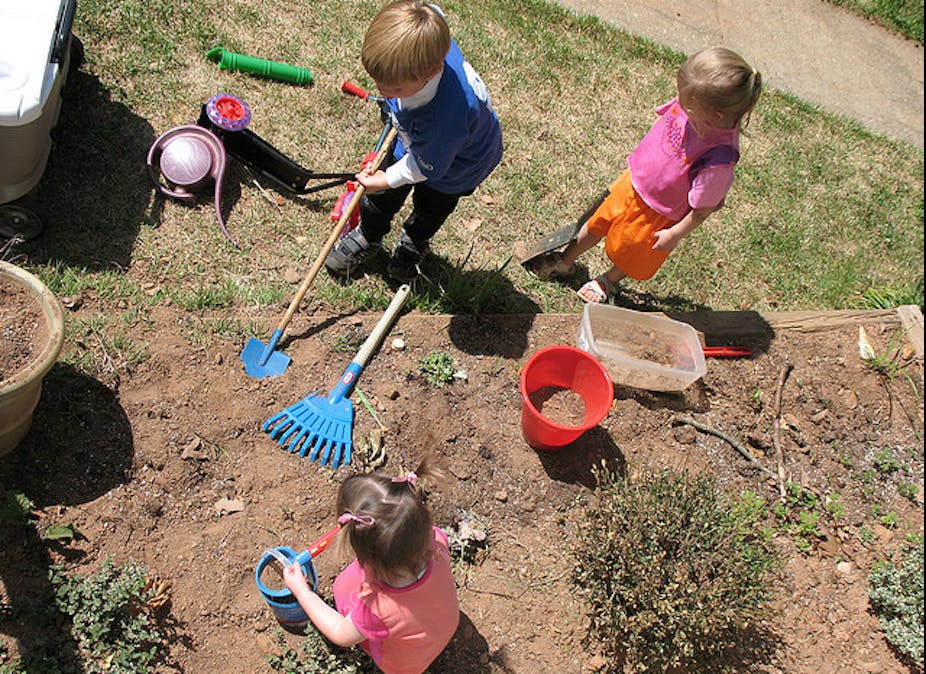Exposure to arsenic in soil and gold mining waste may have contributed to a slight increase in past cancer risk in socioeconomically disadvantaged areas in the Goldfields region of Victoria, according to new research.
The study, which I co-authored with Associate Professor Kim Dowling (University of Ballarat) and Professor Malcolm Sim (Monash University), is published in today’s Journal of Exposure Science and Environmental Epidemiology. It has important implications for other mining sites across the country.
But before we delve into the findings, let’s look at the history.
Toxic legacy
The discovery of gold in Victoria in the 1850s caused an influx of optimistic miners, who brought a rich diversity of skills, cultures and cuisines. You just need to look at the magnificent architecture and streetscapes of towns in Victoria’s Goldfields region to see the enormous wealth generated by gold. New South Wales, Queensland and the Northern Territory also benefited from the discovery of gold.
But back then, environmental effects statements weren’t required before sites were mined. And little thought was given to the consequences of processes used to extract the gold. The Goldfields landscape remains dotted with mine waste dumps, which contain varying amounts of tailings (processed ore) and overburden (unprocessed waste rock).
Gold ores often contain considerable amounts of arsenic, so after gold extraction, the tailings typically have a higher arsenic content than the overburden. Because arsenic occurs naturally around gold in the environment, the search for gold sometimes starts with a search for areas with high soil arsenic concentrations.
Many townships arose around historical gold mining sites and anecdotal evidence suggests that mine waste dumps have been popular playgrounds for the local residents. Expanding urban boundaries are bringing residential housing even closer in some places.
Arsenic exposure
Arsenic is a known human carcinogen. Exposure to arsenic through contaminated drinking water has been linked to various cancers including bladder, colon, kidney, lung and skin cancers in high-exposure areas including Taiwan, Chile and Bangladesh. Although evidence from areas with lower exposure levels is less conclusive, prostate cancer mortality was shown to be elevated the US state of Utah.
When arsenic is present in soil, small amounts can be ingested by swallowing soil through hand-to-mouth actions and breathing in dust. So young children are most at risk.
Most arsenic that enters the body is soon excreted via the urine and some is excreted into the hair and nails, where it is safely out of circulation.
Cancer risk
Our study set out to examine whether low-level exposure to arsenic in soil posed any long-term health risks.
Fortunately, we had access to 20 years of Victorian Cancer Registry data (to 2003) that had just become available.
Because the Australian Bureau of Statistics (ABS) compiles population data within small geographical areas that cover Australia, called statistical local areas (SLAs), we were able to estimate cancer incidence rates for each SLA in the Goldfields and surrounding regions.
We also derived a measure of soil arsenic for each of these SLAs from geochemical data from the University of Ballarat and GeoScience Victoria.
Statistical models showed that the risk of cancer increased slightly with increasing soil arsenic for residents living in socioeconomically disadvantaged areas. We could only investigate a few of the more common cancers individually, but found that the risk of melanoma in males and females increased slightly with increasing soil arsenic, as did prostate cancer in males. We also found some evidence of a link with colon cancer.
A complementary analysis of more socioeconomically disadvantaged areas only, using combined data from SLAs ordered and grouped together by soil arsenic level, suggests the overall cancer risk for men and women living in areas with the highest soil arsenic level increased by 20% and 8%, respectively, compared with residents in low arsenic areas.
The melanoma risk for males in high arsenic areas was 50% higher than for males in low arsenic areas – a factor of 1.5. Women had a 30% increased risk of melanoma. The risk of colon cancer and prostate cancer increased by 20% in areas with high soil arsenic relative to low soil arsenic areas.
These small proportional increases in risk add little to baseline cancer risks, which vary by age and gender. Nevertheless, they may be avoidable.
It is important to note that risks estimated at a population level do not apply to individual people.
Fortunately, good nutrition can help to reduce our susceptibility to arsenic-induced toxicity, and be protective against arsenic-related health effects.
Next steps
Although our study focused on central Victoria, our findings have implications for many parts of Australia with historical and current mining operations, particularly where residential communities are close by.
Despite some testing of soil arsenic being mandatory for new residential developments, we need ongoing monitoring of environmental sources of arsenic on a much greater scale.
Local governments should provide low-cost water and soil testing to residents in affected areas, along with appropriate advice on remediation or mitigation strategies if a potential problem is detected.
We also need further research to identify what constitutes a “safe” exposure level so that strategies can be put in place to avert an increased cancer risk from environmental sources of arsenic and other contaminants.

